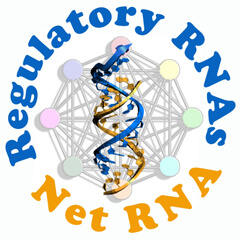LabEx NetRNA

The NetRNA consortium involves eleven teams working on different aspects of regulatory RNAs in various organisms. The general objective of NetRNA is to advance knowledge on functions of the regulatory RNAs, mainly small noncoding RNAs (ncRNAs), and their mechanism of action. These regulatory RNAs will be integrated into the general network of gene expression in a variety of pathogens (bacteria, viruses, parasites) and of organisms such as plants, insects, and mammals. A special focus will be directed towards regulatory RNAs that play a role in stress-related and adaptive responses, immune responses, host-pathogen interactions, and in human diseases such as viral, bacterial or parasitic infections. We will investigate biological roles of regulatory RNAs, elucidate their mechanisms of action, analyze their specific interactions with targets and with proteins involved in RNA biogenesis and function, their transport, movement and localization, and define structure-function relationships. We will also search for modulators of regulatory RNAs and their associated machineries and analyze their mechanism of action and structures. Huge amount of experimental data will be generated coming from small ncRNA deep-sequencing, transcriptomic, and proteomic analysis that will be compiled to build regulatory networks.
The NetRNA consortium will certainly favors strong interactions with biologists, bioinformaticians and mathematicians. We will also take into account in these networks, the variations in ncRNAs, target RNAs, and RNA silencing factors upon stresses in the various organism systems, and will link these variations to other pathways involved in stress-responses. The long-term goal will be to apply our models at the single cell level. Most of the classical studies involve large collection of cells, and thus represents an average that mask differences in individual cells. The NetRNA project should bring out new concepts and novel regulatory mechanisms of gene expression. The broad range of organisms will allow us to assess similarities and differences between regulatory RNA networks, in different phyla or species.
The consortium is based on shared conceptualization, and a broad collective methodological expertise, and will make use of sophisticated instrumentation and techniques such as single cell studies using microfluidics, high throughput sequencing, proteomic tools, and X-ray crystallography. The connection between academic/industrial teams and with biomedical teams will give major benefits and will promote the move of fundamental research towards biotechnology applications or therapeutics. The evolutionary and comparative focus will also promote a broad education of the early master and PhD students and will contribute to education training.
The NetRNA consortium involves 11 teams located in 3 CNRS units working on different aspects of regulatory RNAs in various organisms: